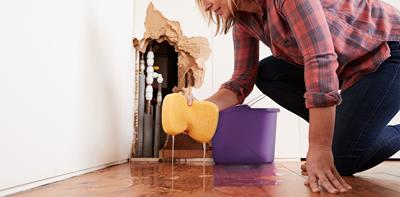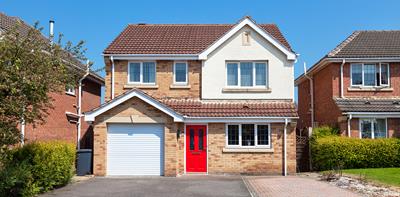
How much will my home insurance cost? It’s a common question, but not one that’s automatically easy to answer as it’s down to a combination of factors.
Insurers take a wide variety of factors into account when working out what your premium will be, not only about the home but also about you and your individual circumstances.
So, what plays a part in the price of your home insurance? Here’s what you need to know.
EASY AS HACK
You could look to buy a policy with less cover, many insurers offer an “essentials” product that is cheaper than their standard policy. You could also look to cut out additional cover such as accidental damage but please ensure you are adequately covered.
At a glance
- From the materials your home is built with to the area you live in, there are many factors that affect the cost of home insurance
- Here are 12 key factors and tips on how you may be able to pay less.
What factors affect the cost of home insurance?
There are quite a few factors that affect your home insurance rate, including:
1. Your address
An insurer can tell a lot just from your postcode. They will look at things like crime rates, for example; if the area has a higher-than-average burglary rate or a high risk of flooding, then you may find your premium is higher.
2. How much cover you need
If you’re insuring a larger home, or the value of your contents is high, then your policy will cost more to get the correct level of cover.
3. The type of property you’re insuring
Detached homes present different risk levels to semi-detached homes or apartments. You will also need to consider if your home is a listed building. The number of bedrooms and bathrooms are also a factor in the pricing. A bedroom is a room either originally built as a bedroom (even if now used for a different purpose e.g. a study) or one that is used as a bedroom. It's important you declare the correct information to ensure you are adequately covered.
4. The structure of the house
Insurers may want to know about the structure of the roof. If a large portion of a roof is flat (most insurers will need to know about a flat roof making up 30% or more of the roof area), there may be issues with water pooling and subsequent damage, resulting in higher premiums. It is worth noting that the roof will need to be well maintained to prevent any claims being rejected due to wear and tear.
5. The materials the house is made of
If your home has a thatched roof, for example, then it’s more at risk of fire damage and you’re more likely to require a specialist insurer and pay a higher premium.
6. Age of the property
Older homes can be more expensive to insure because providers expect the repairs to be more expensive than replacing modern features. If you want to find out how old your property is, check your home survey or mortgage offer. A listed property may require a specialist insurer and care needs to be taken to ensure adequate cover to rebuild completely.
7. Security
As a rule of thumb, the more secure your home is, the lower your premium is likely to be. And of course, the better the security you have in place, the less likely it is that you will need to make a claim.
Many insurers will ask how secure your property is. This will include questions about what locks you have fitted on your doors and windows, and whether there is an alarm in place.
8. Flood risk
If your home is in a flood-risk area, then your premium may be higher. You may still be able to arrange cover for homes with a history of, or high risk of flooding thanks to a scheme called Flood Re which many insurers have access to. This was set up to help households who live in a flood-risk areas and whose house was built up to 2009 to find affordable home insurance.
9. Previous claim history
The number and types of claims you have made will be taken into account by insurers and will affect the premium you have to pay. You should always be honest with insurers and let them know if you’ve made previous claims otherwise you risk invalidating your insurance.
10. Your circumstances
Home insurance is affected by many things including your age, who occupies your home and how the home is occupied.
11. Unoccupied homes
If, for work or whatever reason, you tend to spend a lot of time away from home, you could face high insurance costs. This is due to a higher risk of theft, damage, vandalism and escape of water if your home is unoccupied.
A key point to remember is that cover is often restricted or removed (e.g. for theft or vandalism) when properties are unoccupied. You can, however, find schemes that specialise in unoccupied properties. And don’t forget to always make your insurer aware if your property is regularly or currently unoccupied.
12. Home insurance excess
Excess is the amount you have to pay towards the cost of your claim.
The higher you set your voluntary excess, the lower you can expect your premium to be. But it’s important not to set your excess too high as you don’t want to be struggling to pay it if you need to make a claim.
How to lower the cost of home insurance
Home insurance prices might be high at first glance but don’t worry. There are things you can do to lower the cost.
This includes:
- Improving your home security – as mentioned, fitting your home with a secure lock and a burglar alarm could reduce the risk of your home being burgled. Which in turn can mean slightly lower insurance costs.
- Choose a high voluntary excess, but only if you’re able to do so.
- Pay annually – if you can afford to pay your insurance in one go, it’s likely to be cheaper than paying monthly instalments.
It is important to disclose accurate information in order to ensure that appropriate cover is in place in the event of a claim. Any misrepresentation of the risk can result in a claim not being paid or the policy being cancelled.
What can you do to make sure you pay what you should for your home insurance?
One step you can take to keep your home insurance cover as cost-effective as possible is to make sure you have the right amount of cover in place.
For buildings insurance, this means accurately calculating how much it would cost to rebuild your home. This isn’t the same as your home’s market value.
You can calculate the rebuild cost using the Building Cost Information Service’s house rebuilding cost calculator. But be aware that it doesn’t take any significant property features into account or cover listed properties.
For contents insurance, you’ll need to make sure you provide an accurate estimate of what it would cost to replace the possessions in your home as new. This means you won’t risk being underinsured or paying more than you need to for your cover.
Read our guide on how to value your home contents.
Why has the cost of my home insurance gone up?
The average home insurance price went up by 19% in 2024 compared to 2023 according to The Association of British Insurers. If your insurance is coming up for renewal and the price has increased from last year, it could be due to a number of factors including:
1. High rebuilding costs
The cost of materials and labour needed for repairing and rebuilding damaged homes has increased significantly, so home insurance premiums need to cover this rising cost.
2. Bad weather
Cold winters, prolonged heavy rain and late heatwaves can all cause damage to homes, and this extreme weather gets factored into insurance costs.
3. Insurance fraud
The innocent are impacted by the actions of a few. While insurers work hard to identify and prevent insurance fraud, the increasing risk of fraud means everyone has to pay higher costs.
4. Cost of possessions
Many homes are becoming more advanced, or green. This means the cost of replacing everyday appliances, like smart fridges, can be high, and is then reflected in your insurance cost.
Find out more about our home insurance.


